From The Underworld Of The Dead - Being a Living Paradise. [Egyptian Studies]
Continuing a tour of the sights in Alexandria, I invite you, dear friends, to get acquainted with the other two sights of the northern Egyptian capital.
And if the first place is a bit scary, not everyone dares to get down to nature "Aida", then this second trip is designed for a happy family holiday with the kids.
Ancient Catacombs
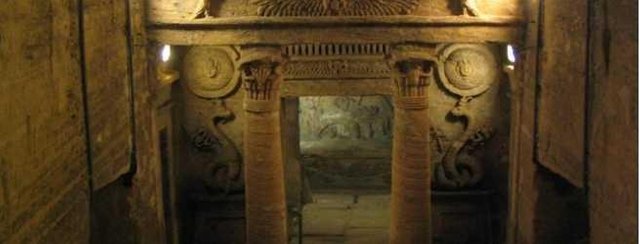
The Catacombs of El-Shokafa Kom, which in Arabic means "Burial Mound" - is a historical archeological site in Alexandria, considered one of Egypt's ancient wonders.
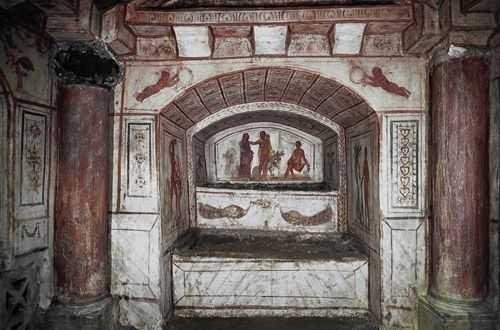
Necropolis consists of a series of tombs and tombs dating from the era of pharaohs, as well as the Greco-Roman period in Egypt. Due to the mixing of age, a unique feature of the El-Shokafa Kom catacombs is a fusion of Roman, Greek and Egyptian culture and art - some sculptures are made in Egyptian style, but dressed in Roman dress, and vice versa - the Hellenic statue clearly attributes Egypt.
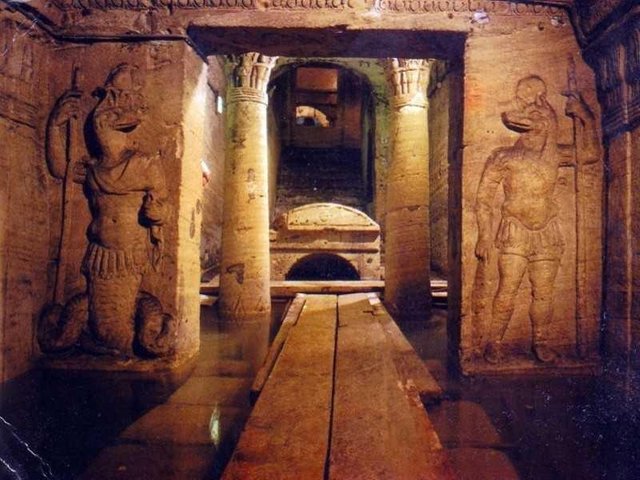
Funny is the fact of finding a catacomb. Despite the fact that archaeological excavations carried out in this area since the late 19th century, the historical objects of Kom El-Shokafa were discovered by chance in 1900, when the donkey burial shaft failed to get stuck in a wheelbarrow of a cleft road.
In the catacombs of three ancient sarcophagi, dating from the reign of the Egyptian pharaoh, as well as the remains of humans and animals have been found, which have been added to the first century CE burial. It is believed that the tomb was originally designed for one family, but the fact remains unclear why the burial place has been expanded, and then buried there many others.
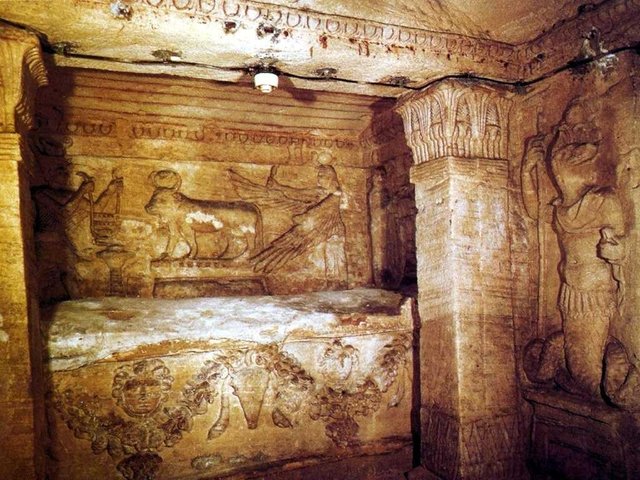
Catacombs are called Kom El Shoqafa, meaning "mound fragments", because the artifacts were first discovered by archaeologists in 1900 - it was a mound of terracotta fragments from jugs and other pottery items - plates, which, apparently, left during a visit to the family tomb , bringing food and wine for the ritual of dhikr.
The ancient cemetery is located in the western necropolis of Alexandria and consists of three levels, separated by solid rock. Unfortunately, the third level is filled with groundwater, so today it is completely covered in sand.
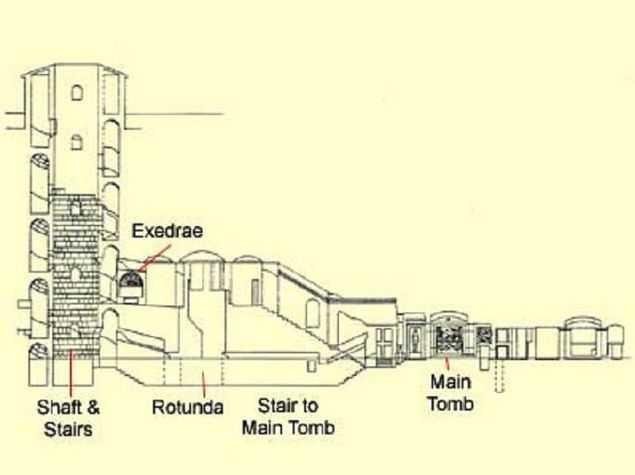
The catacombs have a central hexagonal chamber, "triclinium" - a funeral hall where friends and relatives of the deceased sit on stone benches, during burials and subsequent visits.
A stone staircase leads to the second level, with many ancient statues. In the first room - two columns, crowned with flowers of papyrus and lotus - the symbol of ancient Egypt. On the wall mural scene of ancient Egypt hereafter.
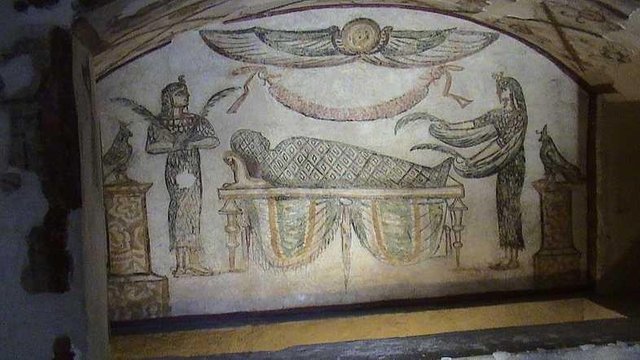
On both sides of the corridor there are two alcoves in the form of Egyptian doors, with two statues - female (left), and male (right). Both of these sculptures were strictly executed in accordance with Egyptian art rules, except for heads - with clear hairstyles from the Hellenic period.
They are presented standing, one leg pushed forward half a step forward, and arms extended on the sides - this is the position most often portrayed by the pharaohs.
The woman wore a narrow long dress, and the man was pictured in a skirt. Roman sculptural style is usually Roman, as it was used in the second century of our era.
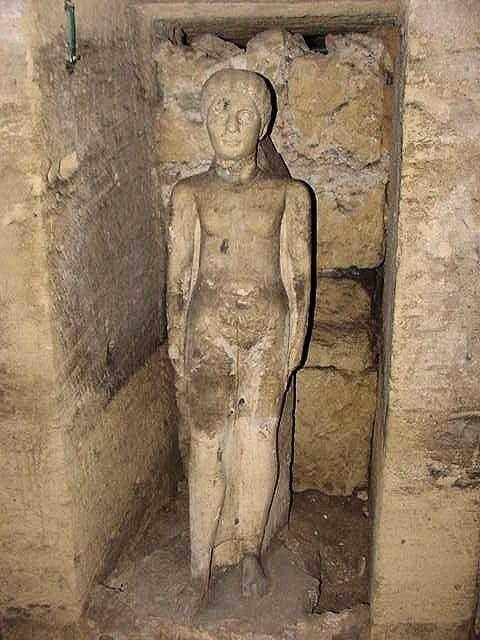
In the next room there are three large stone sarcophagi with a fixed cover on the side of the room. It is assumed that the corpses were laid in them from behind, through holes stretching along the outer side of the burial chamber. One of the sarcophagi depicts typical mummification scenes. In the center of the plot, on the bed of burial, lies the mummy, Anubis wolf (god mummification) standing to his left. Under the bed there are three jugs, which are meant to keep the internal organs of the deceased. One pitcher has a hawk-shaped head cap, on the head of a second male alabaster, on the third monkey. At the top of the box is the God of Wisdom, with the lion's head, in the foot - the God of Falcon - Horos.
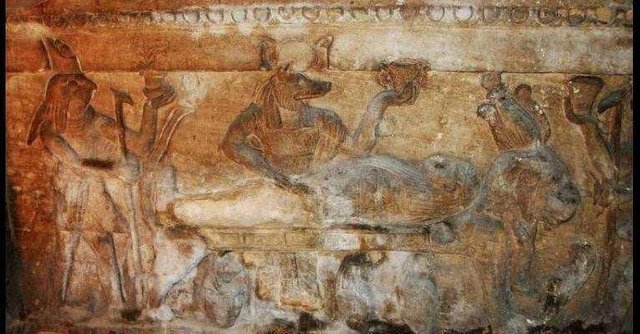
In the central tomb there is a hall with depression, each devoted to the burial of three mummies. Near this part of the tomb there is a narrow alley with over 300 graves.
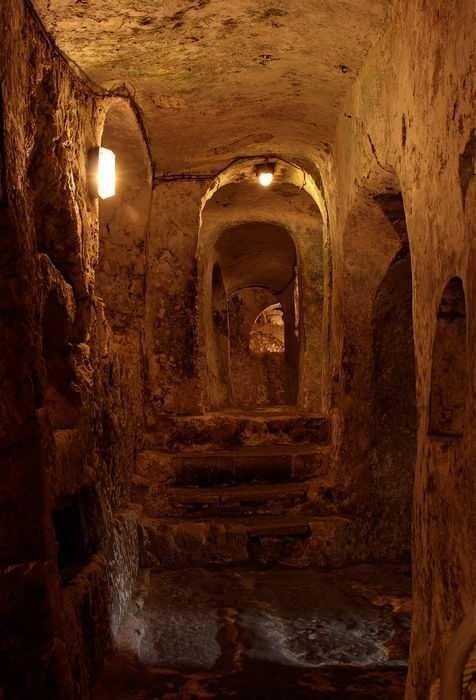
In one of them was found a mummy priest with a gold chain around his neck, and a thin gold leaf covering his eyes, chest, tongue, mouth, and even fingernails and toes.
Let's go back to the rotunda and go through the breaks on the rocks to an entirely different tomb complex. This portion of the cemetery refers to the time of Emperor Caracalla (215 AD), confirmed by the remains of soldiers found in it, which was lost as a result of the massacre that occurred during the Emperor's visit to Alexandria. But most of the bones found do not belong to people, but to horses. Since part of this tomb is dedicated to Nemesis, the goddess of competition and sport, it is believed that the horse who won the race was given a grave in the grave after death, protected by Nemesis's patron.
To be honest, visiting the catacombs is a journey not for the faint of heart. I was in it when the restoration work was still done and the research continued. But, anyway - the feeling that you are walking through an ancient underground cemetery - somehow not very pleasant. Although, of course, there is something to see.
Well, to complement today's acquaintance with the sights of Alexandria on a positive note - I'll tell you about the most fun and beautiful corner in the northern capital of Egypt.
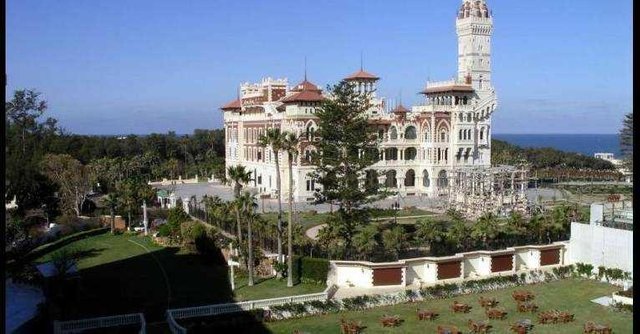
Alexandria has always been and remains a favorite holiday destination for wealthy Cairo citizens who fled from the heat of summer, the noise and haze of the multicultural and multimillion-dollar Egyptian capital.
As well as ordinary Egyptians, the Egyptian rulers liked to spend the summer in Alexandria, since Abbas Helmi II, Egyptian Khedive and Sudan 1892-1914, and ended with President Hosni Mubarak, Egypt's unrivaled ruler years.
This Khedive Abbas in 1892, built on the edge of the Mediterranean summer, hunts the cottage "Al Salamlek" in a unique botanical garden "Montaza", located in the eponymous district of Alexandria.
King Fuad, the successor to the extended dynasty dynasty of Ali Ali, was built in 1932, the palace "Al Haramlik", with a unique architectural style, combining both Turkish and Florentine influences.
The palace was nationalized after the 1952 revolution and renovated in the 70s of last century to serve as President's residence in the summer, to the development of the Sharm El-Sheikh resort in the 90s, where Mubarak has built a new, modern home for relaxation.
Al-Montaz Palace is surrounded by lush gardens with Victorian-style bridges connecting sandy bays and small islands of Pilon.
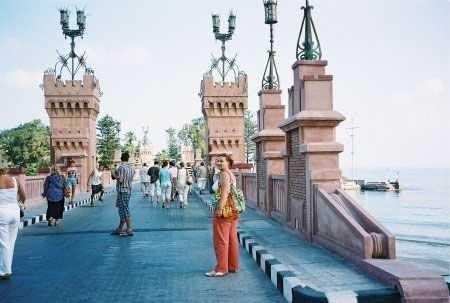
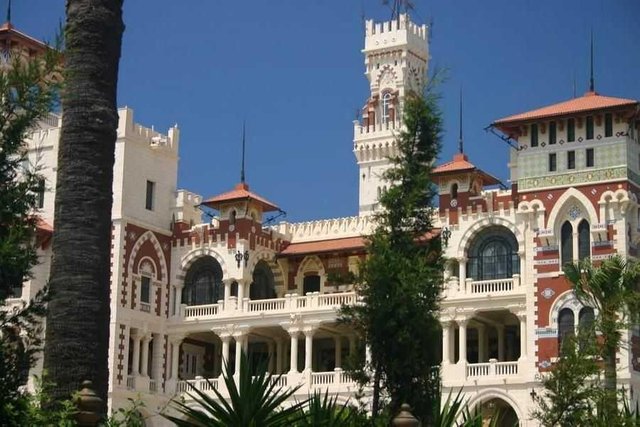
The palace "El Salamlek" in Montaza park, is a place where once the ruler traditionally receives visitors, this time turned into a luxury hotel with developed infrastructure and beautiful beaches, closed the unexpected intricacies of the Mediterranean, sand-made paths.
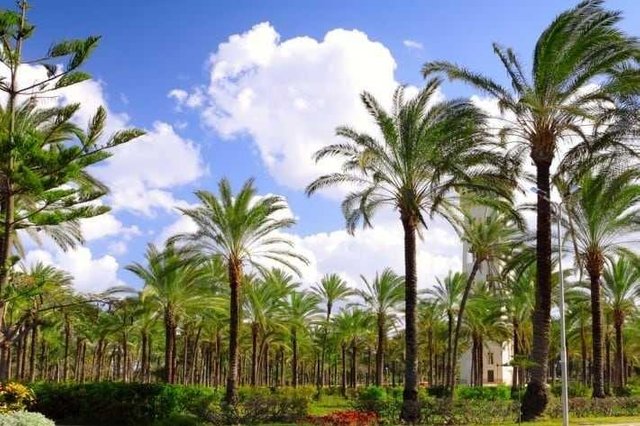
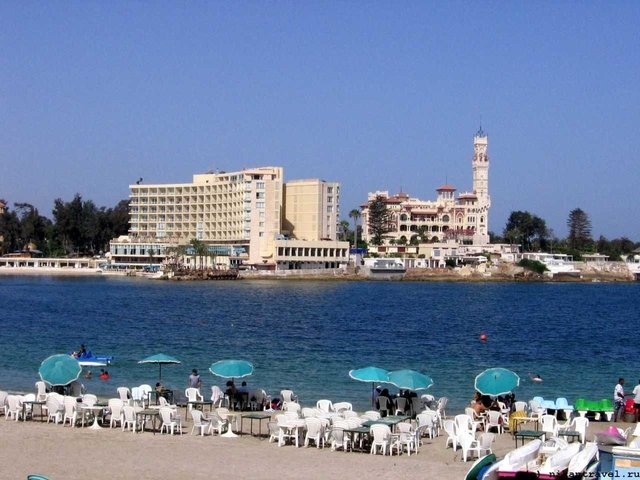
Well, as always - Welcome to Egypt

Vote kedroe mandum..hana gob laen hahaaa